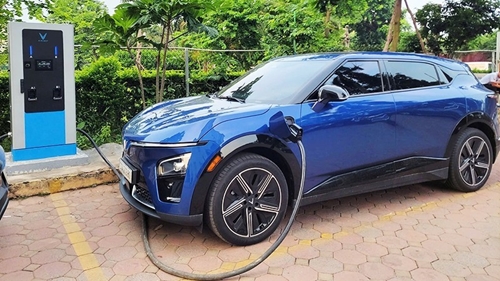The municipal People’s Committee issued Plan No.149/KH-UBND on May 28, to implement the scheme for developing a public transport system using electric and green-energy buses.
    |
 |
|
Hanoi plans to expand the charging station network for better efficiency. |
Under the plan, from 2025 to 2026, the city will complete mechanisms and policies to support businesses in switching to green vehicles, expand the electric and green-energy bus network, and build charging stations. The targeted proportion of green buses is set at 10% in 2025 and 20–23% in 2026.
Between 2027 and 2030, the capital aims to fully implement the transition roadmap and complete the conversion by 2030. It also plans to expand the charging station network for better efficiency and the electric bus system for enhanced connectivity and service capacity.
Since early 2025, Hanoi has launched six new electric bus routes with 97 vehicles, raising the total to 16 electric bus routes out of 128 in operation, with 246 electric buses overall.
According to the Hanoi Department of Construction, by the end of June, the city had 8,831 electric taxis, accounting for 47.4% of all taxis currently operating.
Regarding public bike-sharing services, as of July 8, Hanoi had established 118 stations within the Ring Road 3 area, with a total of 1,100 bikes, including 1,000 standard bicycles and 100 electric-assisted ones. The service is available 24/7.
Deputy Director of the municipal Department of Construction Dao Viet Long stated that Hanoi will introduce policies to support the switch to green transport. These policies will include both direct financial assistance and indirect incentives through fees and charges. In addition, new solutions for public transportation will be introduced to better meet residents’ travel needs and discourage the use of motorbikes. Integration between different transport modes is also being considered./
Source: VNA